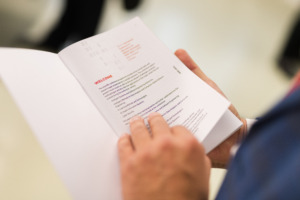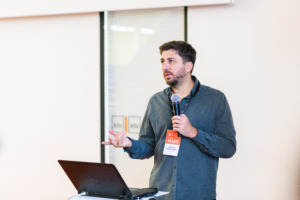When Dr. Serafeim Moustakidis took the stage at the International Conference on Information and Software Technologies (ICIST), held on October 16–17, 2025, the auditorium at Kaunas University of Technology’s Faculty of Informatics was filled with anticipation.
As the conference’s keynote speaker, he didn’t just discuss algorithms or technical models – he spoke about the fragile balance between ambition and reality in AI-driven healthcare. His insights, drawn from years of experience in EU-funded research projects, offered a rare behind-the-scenes glimpse into what it truly means to innovate responsibly in a field where both human lives and technological limits intertwine.
Data and Consent Challenges
Before any algorithm is trained, researchers face the biggest hurdle: data availability. While setting up a consent process is easy, obtaining participation from enough people to build a robust solution is incredibly difficult, particularly in the case of rare diseases.
S. Moustakidis illustrated this challenge with a cancer detection project, where the emotional state of newly diagnosed patients made it challenging to encourage their participation in providing samples for the trial.
Tiny Devices, Major Challenges
Most modern health devices rely on wearables or smartphones with limited computing power. “We want models that can run on the device itself,” he says. “But mobiles and wearables have restrictions—you can’t fit a huge neural network inside a smartwatch.”
These technical limitations are only part of the challenge. Privacy adds another layer of complexity. “Sometimes you click a consent box without understanding what it means,” he notes. “If we really want trustworthy AI, we have to make sure data stays private and secure.”
“VOCORDER”: Pioneering the Future
Despite the challenges, the VOCORDER project has made remarkable progress, driven by the efforts of an international team of researchers.




